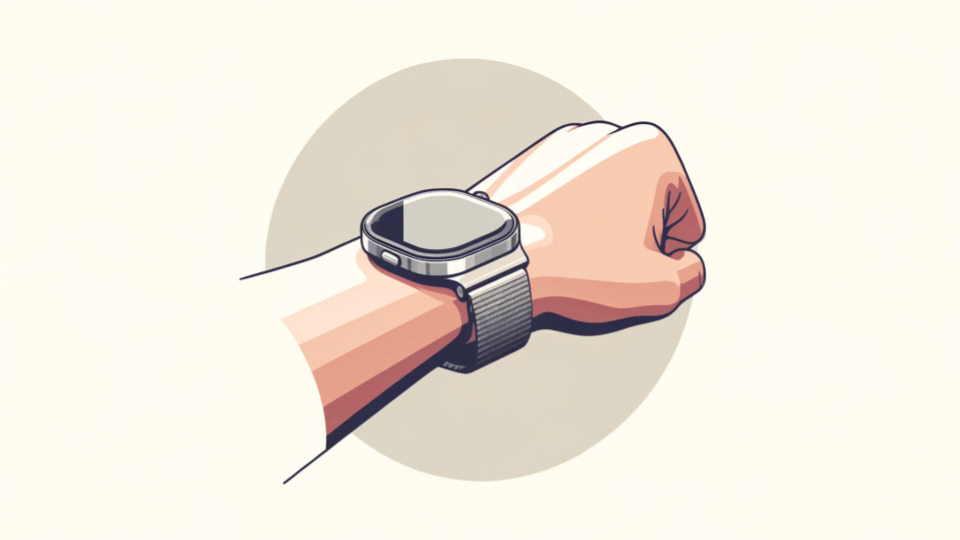The “What is what” of Wearable Technology
Wearable technology, a significant component of the consumer electronics sector, has woven itself into the fabric of daily life, enhancing our ability to monitor health, manage communications, and interact with our environment more seamlessly.

This dynamic field encompasses devices like fitness trackers, smartwatches, and advanced medical wearables, which have become increasingly popular due to their convenience and the growing focus on health and fitness.
The global wearable technology market is burgeoning, with projections indicating a rise from USD 120.54 billion in 2023 to USD 157.94 billion in 2024, eventually reaching an impressive USD 1,415.26 billion by 2032. This represents a compound annual growth rate (CAGR) of 31.5% over the forecast period, driven by innovations and an increasing emphasis on connected devices and health monitoring (Wearable Technology | Fortune Business Insights).
Smartwatches dominate the market, leveraging features that cater to health-conscious consumers by monitoring vital signs and fitness metrics. The consumer electronics segment led the market in 2022, accounting for over 48.95% of the overall revenue. North America holds the largest market share due to its quick adoption of technology and health-oriented wearable devices (Wearables Market | Allied Market Research).
The Asia Pacific region is anticipated to be the fastest-growing market, thanks to rising living standards and technological adoption. Innovations in wearable technology are not only limited to personal use but are increasingly being integrated into healthcare practices, enhancing patient care through remote monitoring and telehealth (Wearable Technology | Mordor Intelligence).
Despite the rapid growth, the wearable technology market faces several challenges, including intense competition, the need for continuous technological updates, and concerns about data security. Furthermore, issues such as device integration, battery life, and the necessity for stable and reliable technology platforms persist, posing hurdles to both consumers and manufacturers.
What is Wearable Technology?
Wearable technology consists of electronic devices that consumers can wear, such as smartwatches, fitness trackers, and advanced medical wearables. These devices are designed to integrate seamlessly into everyday life, enhancing personal efficiency and health management.
At its core, wearable technology includes devices equipped with smart sensors, and they often connect to the internet. They can track a wide range of personal data, from steps walked to heart rate, and even blood glucose levels. For instance, recent advancements have seen the integration of Electrocardiogram (ECG) and Global Positioning System (GPS) technologies into these devices, making them powerful tools for health monitoring and navigation.
The adoption of wearable technology has skyrocketed, with the number of connected wearable devices worldwide reaching into the hundreds of millions. As of 2022, there were approximately 929 million devices globally, a number expected to grow as the technology becomes more pervasive. This rise is fueled by consumers’ increasing awareness of their health and a growing preference for conveniently accessible technology (Wearable Technology | Statista).
Wearable technology is increasingly becoming a part of daily life for many people. Users can receive notifications, answer calls, and even make payments directly from their devices, exemplifying the blend of convenience and functionality that these gadgets offer. Moreover, the ability to manage notifications and track health metrics in real time makes these devices invaluable for modern living.
How Wearable Technology Works?
Wearable technology functions through a sophisticated blend of hardware and software components that work together to monitor, record, and transmit information about a user’s activities and health.
The heart of most wearable devices is a microprocessor, paired with sensors that track motion, orientation, and various health indicators such as heart rate, temperature, or even blood oxygen levels. These sensors collect data continuously and are integral for features like step counting, activity tracking, and health monitoring.
Connectivity and Data Integration
Most wearables are equipped with wireless connectivity, such as Bluetooth or Wi-Fi, allowing them to connect to smartphones or other devices. This connectivity enables the transfer of data to apps where users can view detailed analytics of their health and activities. It also facilitates firmware updates that enhance device functionality over time.
Power Management and Efficiency
Efficient power management is crucial for wearables, as they are expected to operate continuously without frequent recharging. Advances in battery technology and power-efficient chips have significantly improved the usability of these devices, making them more practical for everyday use. Despite these advances, battery life remains a challenge and a focus area for future improvements.
Software and User Interface
On the software side, wearable devices run on operating systems that are optimized for low power consumption and efficient performance. These systems support applications that utilize the data collected by sensors to provide users with insights and actionable information. User interfaces are designed to be simple and intuitive, often utilizing touchscreens or voice commands for navigation and control.
Through the integration of these technologies, wearable devices provide a seamless and interactive experience that supports a wide range of functions, from fitness tracking to health monitoring, enhancing the quality of life for users worldwide.
Current Trends in Wearable Technology (2024)
Wearable technology in 2024 is marked by rapid innovation and expanding functionalities, especially in the fields of health monitoring and augmented reality (AR).
Smartwatches and Fitness Bands
Smartwatches continue to dominate the wearable tech market. The launch of devices like the Apple Watch X and Samsung Galaxy Ring has introduced new health-focused features such as improved heart rate monitoring and blood pressure tracking. These advancements cater to a growing consumer demand for health and fitness monitoring technologies.
Health Monitoring Advances
There is an increasing trend towards non-invasive health monitoring tools. Innovations include sensors that can track blood glucose levels without the need for finger-prick tests, and devices capable of monitoring mental health by assessing stress and anxiety levels. These tools are becoming crucial for chronic disease management and preventative health care.
Wearable AR and VR Headsets
Augmented reality and virtual reality headsets are gaining traction, not just in gaming, but also in professional settings. Devices like the XREAL Air 2 Ultra AR offer enhanced AR experiences, which are becoming more comfortable and feature-rich. This technology is now being leveraged in diverse fields such as real estate for virtual tours, in education for immersive learning experiences, and in healthcare for surgical training.
Consumer Adoption and Market Impact
With technological enhancements, the adoption rates of wearable devices continue to climb. North America remains a significant market due to high consumer spending power and a keen interest in the latest technologies. However, Asia Pacific is expected to witness the fastest growth due to increasing technological adoption and rising health consciousness among its expanding middle-class population.
These trends highlight the dynamic nature of the wearable technology market in 2024, showcasing a blend of innovation aimed at enhancing daily life and health management. Each development not only caters to the existing consumer base but also expands the potential applications of wearable tech in new and exciting directions.
Innovations on the Horizon
The wearable technology sector is poised for groundbreaking innovations, particularly in health monitoring and personalized wearable experiences.
Advanced Health Monitoring Devices
Emerging wearable technologies are focusing on even more advanced health metrics. For instance, new devices are expected to offer capabilities like continuous blood pressure monitoring without the need for calibration against traditional cuffs. Companies are also exploring wearables that can predict medical events such as heart attacks or strokes by analyzing real-time health data combined with artificial intelligence (AI).
Integration of AI and Machine Learning
AI and machine learning are becoming integral to the development of wearable technology. These technologies enhance the functionality of wearables through more accurate data analysis, personalized health insights, and predictive health alerts. This integration is expected to improve not only user engagement but also the overall effectiveness of health interventions.
Next-Generation Wearables in Sports and Fitness
In the sports and fitness realm, companies are developing wearables that offer more detailed analytics on user performance, recovery, and health metrics. These devices use sensors to provide feedback that can help optimize training routines and prevent injuries. The goal is to make these insights accessible not just to professional athletes but to anyone interested in improving their physical health (Wearable Technology Market | Fortune Business Insights).
Sustainable Wearables
Sustainability is becoming a key focus in the design and manufacture of wearable devices. Companies are innovating to create wearables with eco-friendly materials and longer life cycles. Efforts include improving battery technology to extend the wearable’s lifespan and reducing the environmental impact associated with device production and disposal.
These innovations reflect a shift towards more personalized, health-focused, and sustainable wearable technology, aiming to significantly enhance user experience and impact across various sectors.
Spotlight on Industry Innovators
The wearable technology landscape is dotted with innovative companies pushing the boundaries of what these devices can do. Here, we highlight a few key players making significant impacts.
Plimes
Plimes is at the forefront of wearable respiratory technology. Their latest devices can continuously monitor respiratory rates and patterns, providing crucial data for patients with chronic respiratory conditions. This technology not only enhances patient monitoring but also allows for early detection of potential respiratory issues before they become critical.
Psychic VR Lab
Psychic VR Lab has made strides in integrating virtual reality with wearable technology. Their newest developments focus on creating more immersive and accessible VR experiences that are lightweight and can be used in various educational and therapeutic settings. Their efforts are set to redefine how VR is perceived and used, making it more mainstream and user-friendly.
Nimo Planet
Nimo Planet is making waves with its smart glasses designed for seamless augmented reality experiences. These glasses are equipped with high-resolution displays and intuitive controls, aimed at professionals who need hands-free access to information while working. Nimo Planet’s smart glasses are particularly useful in industries like manufacturing and logistics, where real-time data overlay and hands-free operation are crucial.
Alpha Monitor
Alpha Monitor is known for its cutting-edge wearable health devices that track vital signs with remarkable accuracy. Their latest products include features like stress analysis and sleep quality assessment, providing users with a comprehensive overview of their health status. These wearables are particularly aimed at users who require constant monitoring due to chronic health issues.
Gleneck Technology
Gleneck Technology stands out for its innovative approach to integrating wearable technology with smart home systems. Their devices not only track health metrics but also allow users to control home environments based on their physiological states. For example, adjusting lighting or temperature based on the user’s mood or activity level, enhancing both comfort and energy efficiency.
These innovators are not just creating products; they are crafting ecosystems that enhance user interaction with technology, making everyday tasks more efficient and health management more effective.
Market Impact and Consumer Adoption
The market impact and consumer adoption of wearable technology have seen significant growth, underscored by impressive sales figures and expanded market reach.
In 2024, the global market for wearable technology is projected to reach approximately $70 billion, showcasing a robust annual growth rate. North America leads in market share, driven by high consumer spending and rapid adoption of new technologies. Meanwhile, the Asia Pacific region is expected to exhibit the fastest growth, due to rising technological literacy and an expanding middle class (Wearable Technology Market | Grand View Research).
Consumer Preferences and Device Adoption
Consumer preferences are increasingly leaning towards integrated devices that offer both health monitoring and seamless connectivity with other smart devices. This trend has fueled the sales of smartwatches, which are projected to hit 150 million units globally by the end of 2024. Fitness trackers are not far behind, with significant uptake due to their affordability and functional versatility.
Impact on Healthcare and Lifestyle
Wearable devices are profoundly integrating into healthcare, with the market for health-focused wearables anticipated to grow by 20% annually. These devices are not just wellness tools but are becoming essential in managing chronic conditions and preventive healthcare, which significantly contributes to their market appeal and consumer adoption.
Challenges and Opportunities
While the market faces challenges such as concerns over data security and the risk of dependency on these devices, it also encounters opportunities for growth. Innovations aimed at enhancing privacy and user autonomy are expected to drive further market expansion. Additionally, emerging markets present a fresh landscape for increasing penetration of wearable technologies.
This exploration of market dynamics highlights the widespread impact and robust consumer adoption of wearable technology, illustrating a significant shift in how individuals interact with technology in their daily lives and manage their health.
Challenges and Considerations
As wearable technology evolves, it faces several challenges and considerations that could impact its future development and consumer acceptance.
Data Privacy and Security
One of the primary concerns with wearable technology is data privacy and security. As devices collect detailed health and personal information, the risk of data breaches increases. Companies must enhance security measures to protect sensitive data and build trust with users. Ensuring robust encryption and secure data storage is crucial.
Battery Life and Device Dependability
Battery life remains a significant challenge for wearable technology. Users expect devices that can last long on a single charge without compromising functionality. Manufacturers are continually researching more efficient battery technologies and power management systems to meet these expectations.
Integration with Other Technologies
Another consideration is the integration of wearables with other technologies, such as smartphones and smart home systems. Seamless connectivity is often expected but can be difficult to achieve across different platforms and operating systems. Improving compatibility and user experience is essential for broader adoption.
Regulatory Compliance
Wearable devices, especially those used for health monitoring, must navigate complex regulatory landscapes. Compliance with health and safety standards is mandatory, and getting approval from bodies like the FDA can be a lengthy and challenging process. This can delay product launches and increase development costs.
Ethical Implications
Lastly, the rise of wearable technology brings ethical implications, particularly concerning user consent and the potential for surveillance. Companies need to address these issues transparently, ensuring that users are fully aware of how their data will be used and have control over their personal information.
Addressing these challenges effectively will be key to ensuring the continued growth and acceptance of wearable technology in various aspects of daily life.
Future Outlook
The future of wearable technology appears vibrant and full of potential, with advances expected in several key areas.
Sustainable and Eco-friendly Technologies
The push towards sustainability is shaping the future of wearables. Companies are focusing on eco-friendly materials and production processes to minimize environmental impact. Additionally, advancements in battery technology are anticipated to extend device lifespans and reduce waste.
Enhanced Health Monitoring Features
Health monitoring capabilities of wearable devices are expected to become more advanced. Future devices will likely include features for predicting health events, such as cardiac episodes, and providing real-time health alerts. This will not only improve individual health management but also potentially decrease healthcare costs by preventing emergencies.
Integration with Artificial Intelligence
Artificial Intelligence (AI) will play a crucial role in the evolution of wearable tech, making devices smarter and more intuitive. AI is expected to enhance the analysis of health data, offering personalized insights and recommendations based on user behavior and collected health metrics.
Expansion into New Markets
Wearable technology is set to expand beyond fitness and health into other sectors such as finance, insurance, and even real estate, offering new functionalities like secure payments and identity verification. This expansion will likely open up new markets and opportunities for growth.
Regulatory Developments
As wearables become more integrated into healthcare and other critical sectors, regulatory scrutiny will increase. Manufacturers will need to navigate these regulations carefully to ensure compliance and maintain consumer trust. This will involve continuous engagement with regulatory bodies and possibly adapting to new legal standards.
The future of wearable technology holds exciting prospects that could transform not just how we manage health and fitness but also how we interact with the world around us, making everyday life more connected, efficient, and personalized.
Conclusion
The exploration of wearable technology has revealed a dynamic industry poised for substantial growth and innovation. As we’ve seen, this technology has already made significant strides in health monitoring, consumer electronics, and fitness, with an expanding impact across various sectors.
Wearable devices have evolved into essential tools for health management, fitness tracking, and enhancing daily convenience. With a market expected to grow exponentially, driven by technological advancements and increasing consumer demand, the potential for wearables is vast.
The integration of advanced sensors and artificial intelligence in wearables promises more personalized and proactive health management. These technologies are not just creating new opportunities for consumers but are also paving the way for significant transformations in healthcare delivery and preventive medicine.
Despite challenges such as data security and device dependency, the future of wearable technology looks promising. With a focus on sustainability and eco-friendly practices, manufacturers are poised to reduce the environmental impact of their products while continuing to innovate.
As wearable technology continues to integrate into our lives, it will keep offering more sophisticated tools to enhance personal and professional aspects of daily routines. With ongoing advancements, the reach and effectiveness of wearable devices will only broaden, making this technology a cornerstone of modern life.
Creative Head – Mrs. Shemi K Kandoth
Content By Dork Company
Art By Dork Company













Leave a Reply
You must be logged in to post a comment.